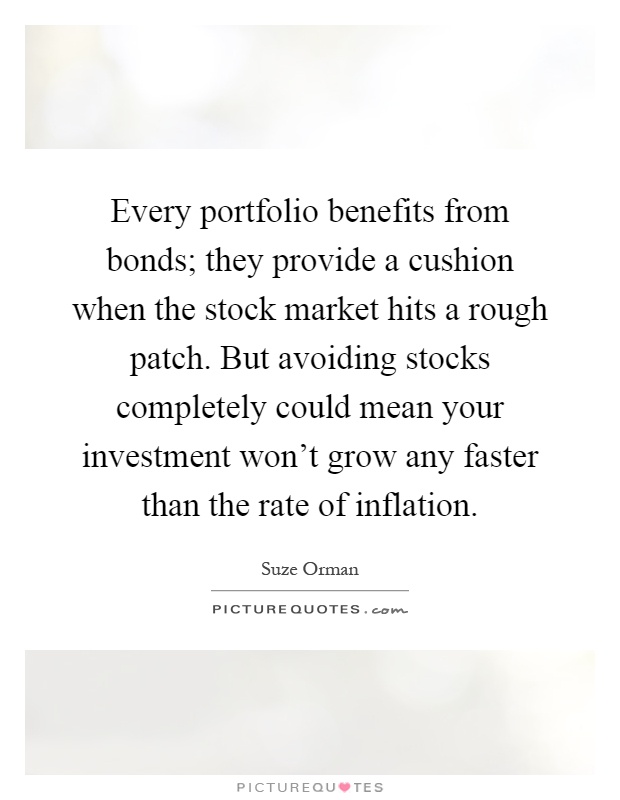Portfolio in stock market meaning
Market portfolio is a portfolio consisting of a weighted sum of every asset in the market, with weights in the proportions that they exist in the market, with the necessary assumption that these assets are infinitely divisible. Richard Roll 's critique [3] states that this is only a theoretical concept, as to create a market portfolio for investment purposes in practice would necessarily include every single possible available asset, including real estate, precious metals, stamp collections, jewelry, and anything with any worth, as the theoretical market being referred to would be the world market.
There is some question of whether what is used for the market portfolio really matters.
Roll gave an example where different indexes produce much different results, and that by choosing the index you can get any ranking you want. Brown and Brown examine this, using different indexes such as stocks only, stocks and bonds, and stocks plus bonds plus real estate. They find that using a market that includes real estate produces much different results.
For example, with one measurement most mutual funds have alpha close to zero, while with another measurement most of them have significantly negative alpha. Most index providers give indices for different components such as stocks only, bonds only, et cetera. Roll's critique states that these proxies cannot provide an accurate representation of the entire market.
How to Build a Stock Portfolio: 14 Steps (with Pictures) - wikiHow
The concept of a market portfolio plays an important role in many financial theories and models, including the capital asset pricing model where it is the only fund in which investors need to invest, to be supplemented only by a risk-free asset, depending upon each investor's attitude towards risk.
Sharpe notes that many investors are at least targeted to a fixed ratio e. He points out that this is sort of contrarian. The holdings of all investors combined must, by equation, be in the cap-weighted proportions.
So many investors following this strategy implies some other investors must follow a buy-high, sell-low trend following strategy. He then says that he doesn't like it and people should use adjustments to the market proportions instead.
Doeswijk, Lam and Swinkels [6] [7] argue that the portfolio of the average investor contains important information for strategic asset allocation purposes. This portfolio shows the relative value of all assets according to the market crowd, which one could interpret as a benchmark or the optimal portfolio for the average investor.
The authors determine the market values of equities, private equity, real estate, high yield bonds, emerging debt, non-government bonds, government bonds, inflation linked bonds, commodities, and hedge funds.
Market portfolio - Wikipedia
For this range of assets, they estimate the invested global market portfolio for the period For the main asset categories equities, real estate, non-government bonds and government bonds they extend the period to Doeswijk, Lam and Swinkels [8] show that the market portfolio realizes a compounded real return of 4.
In the inflationary period from to , the compounded real return of the GMP is 2. The reward for the average investor is a compounded return of 3.
From Wikipedia, the free encyclopedia. Swinkels, Strategic Asset Allocation: The Global Multi-Asset Market Portfolio , Financial Analysts Journal, 70 2 , pp. Swinkels, Historical Returns of the Market Portfolio, Working Paper. Financial risk and financial risk management. Concentration risk Consumer credit risk Credit derivative Securitization.

Volume risk , Basis risk , Shape risk , Holding period risk , Price area risk Equity risk FX risk Margining risk Interest rate risk Volatility risk Liquidity risk e. Operational risk management Legal risk Political risk Reputational risk Valuation risk.
Profit risk Settlement risk Systemic risk. Market portfolio Modern portfolio theory RAROC Risk-free rate Risk parity Sharpe ratio Value-at-Risk VaR and extensions Profit at risk , Margin at risk , Liquidity at risk.
Diversification Expected return Hazard Hedge Risk Risk pool Systematic risk. Financial economics Investment management Mathematical finance. Retrieved from " https: Market risk Investment Economics and finance stubs.
What is Market Portfolio? definition and meaning
Articles needing additional references from December All articles needing additional references All stub articles. Navigation menu Personal tools Not logged in Talk Contributions Create account Log in. Views Read Edit View history. Navigation Main page Contents Featured content Current events Random article Donate to Wikipedia Wikipedia store. Interaction Help About Wikipedia Community portal Recent changes Contact page.
Tools What links here Related changes Upload file Special pages Permanent link Page information Wikidata item Cite this page.

This page was last edited on 7 June , at Text is available under the Creative Commons Attribution-ShareAlike License ; additional terms may apply. By using this site, you agree to the Terms of Use and Privacy Policy.
Privacy policy About Wikipedia Disclaimers Contact Wikipedia Developers Cookie statement Mobile view. This article needs additional citations for verification.
Please help improve this article by adding citations to reliable sources. Unsourced material may be challenged and removed.
December Learn how and when to remove this template message. Credit risk Concentration risk Consumer credit risk Credit derivative Securitization.
This economics -related article is a stub. You can help Wikipedia by expanding it.